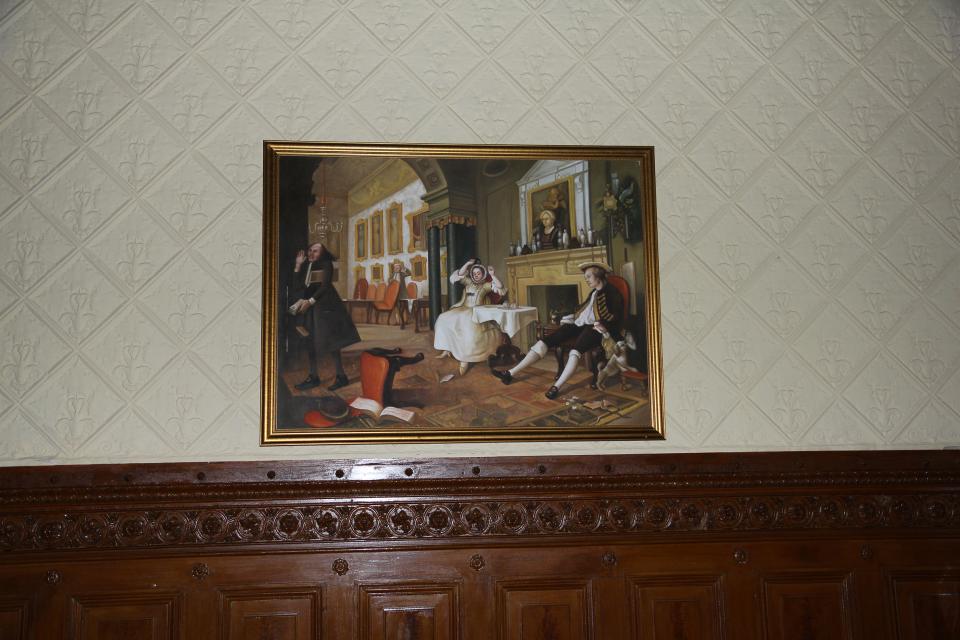Works by this Artist
Marriage à la Mode: Tête à Tête, paintingWilliam Hogarth, c. 1743 Marriage à la Mode: The Tête à Tête
William Hogarth, c. 1743
Background
father was school teacher and failed restaurant owner; spent 4 years in debtors’ prison
Studies
apprenticed to engraver Ellis Gamble (1713-20); St Martin’s Lane Academy (1720-24); James Thornhill’s Free Academy (1724)
Career
- engraver, illustrator, painter, political satirist, art theorist
1735 - initiated Engravers’ Copyright Act
1745 - held private auction of own works
1757 - appointed Painter to the King
1761 - elected member of Society of Artists of Great Britain
Travels
France (1748)
Important Artworks
A Rake’s Progress, (series of paintings, engraved in 1735; Sir John Soane’s Museum, London)
Hogarth believed:
“It is a constant rule in composition in painting to avoid regularity. When we view a building, or any other object in life, we have it in our power, by shifting the ground, to take that view of it which pleases us best; and in consequence of this, the painter, if he is left to his choice, takes it on the angle rather than in front, as most agreeable to the eye; because the regularity of the lines is taken away by their running into perspective, without losing the idea of fitness: and when he is of necessity obliged to give the front of a building, with all its equalities and parallelisms, he generally breaks (as it is termed) such disagreeable appearances, by throwing a tree before it, or the shadow of an imaginary cloud, or some other object that may answer the same purpose of adding variety, which is the same without taking away uniformity. If uniform objects were agreeable, why is there such care taken to contrast, and vary all the limbs of a statue?”
William Hogarth, “Of Uniformity, Regularity, or Symmetry,” The Analysis of Beauty (London: R. Scholey, 1810)
Readings
Bindman, David. Hogarth and his Times. Berkeley, CA: University of California Press, 1997
Craske, Matthew. William Hogarth. Princeton, NJ: Princeton University Press, 2000
Fort, Bernadette and Angela Rosenthal, eds. The Other Hogarth: Aesthetics of Difference. Princeton, NJ: Princeton University Press, 2001
Hogarth, William. The Analysis of Beauty, 1753
Paulson, Ronald. Hogarth, 3 vols. New Brunswick, NJ: Rutgers University Press, 1991-93
Uglow, Jenny. Hogarth: A Life and a World. New York: Farrar, Strauss and Giroux, 2002
